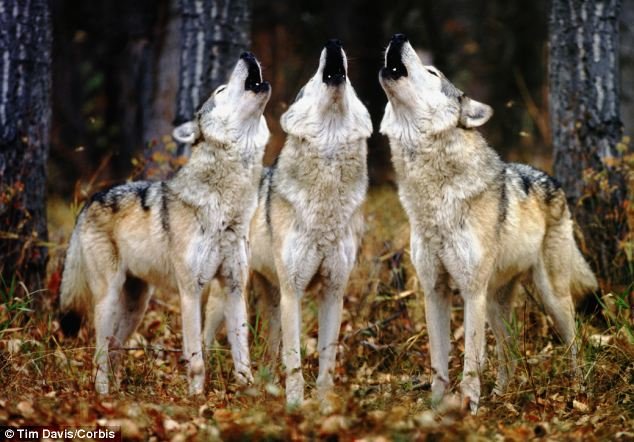A research team from the United States, United Kingdom, Spain and India ran more than 2,000 different recorded howls from 13 canid species and subspecies (the canid family includes wolves, jackals, and domestic dogs) through a software algorithm that boiled them down to 21 howl types (depending on pitch and other characteristics).
They found that different wolf species use the howl types in ways that are specific to them. Timber wolves, for example, use a preponderance of low, flat howls, as opposed to higher vocals used by red wolves.
The scientists said their findings could aid in conservation efforts. For example, while most of the vocal dialects they studied were distinct enough between species to prevent confusion, a few were so similar that they could help fuel interbreeding between different species.
Red wolves and coyotes were such a case. In the study, their howling dialects overlapped significantly.
Efforts to revive populations of the critically endangered red wolf have been stymied due to interbreeding with coyotes. The howling overlap between red wolf and coyote, said study lead Arik Kershenbaum, from the University of Cambridge, "may be one reason why they are so likely to mate with each other, and perhaps we can take advantage of the subtle differences in howling behavior we have now discovered to keep the populations apart."
The researchers also said playback recordings might be used to mimic territorial sounds, perhaps convincing wolf packs to steer clear of livestock.
Kershenbaum and his colleagues think the howling study could also teach us more about the evolution of human language.
"Wolves may not be close to us taxonomically, but ecologically their behavior in a social structure is remarkably close to that of humans. That's why we domesticated dogs: They are very similar to us," said Kershenbaum.
"Understanding the communication of existing social species is essential to uncovering the evolutionary trajectories that led to more complex communication in the past, eventually leading to our own linguistic ability," he added.Currently, Kershenbaum and colleagues are using new recording methods to try to figure out what the howling types actually mean, what they communicate between animals -- a challenging task, he said, given that it's "virtually impossible" to follow wolf packs in the wild.
The team's work has been published in the journal Behavioural Processes.




What happened!
We no longer respect one another, we talk in a language of superficial babble. Nobody really, and I mean really, understands what another is saying it's all this psychobabble,
We are interconnected with all life on the world we live. It can be positive or negative depending on the nature of the person.
Seems to me in a sense that some animals have developed a much more interconnected system of communication than we humans have. We seem to think that because we vocalize words that we have the ultimate form of communication.
No one person in this world as far as I know, regardless of nationality, ethnic background etc. has been able to come up with a universal language where all thought, intellect and universal concepts apply.
Now just think about this, it may be a stretch, but animals have been doing this since there evolution, they have survived.
The wolves survive in close interconnected communities and are able to adapt, they speak the same language, have the same values that keep a society together.
My bigger question is "Why can't We do That"